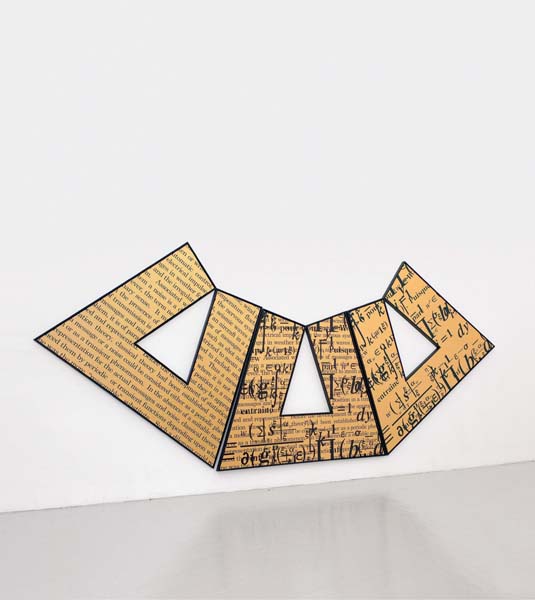Bernar Venet
In 1966 (aged 24) Bernar Venet traveled to New York for the first time, and later in the year he moved there for good. He was formed in New York during the period of Conceptual and Post-Minimal art known as the “dematerialization” of the object. He was won over by an exhibition of contemporary American sculpture that took place at the Whitney Museum of American Art, where Minimal artists such as Donald Judd, Dan Flavin, Carl Andre and Sol LeWitt cultivated industrial inexpressiveness, focused on the surface rather than the interior and rejected implied depths in favor of a perceived and present surface. In this spirit, Venet developed his Tubes, 1963, but this led him in another direction, towards a study of the relationship between sculptural and pictorial elements, in the context of the theories of the French semiotician Jacques Bertin.For Venet, up to then art history had evolved within the limits of polysemy and pansemy, or representation and abstraction. What was at stake was to free art from the whims of subjectivity, from aesthetics and from the involvement of the artist in the act of creation, and thus to give prime importance to the internal conceptual code of the work. He began making black and white photo-enlargements illustrating mathematical-geometrical formulae, and he also began to work with the astrophysicist Jack Ullman of Columbia University. Between 1967 and 1969 Venet made ten recordings of scientific lectures and presented them as his artworks. He then announced that he would quit art-making, which he did for six years after his return to France in 1970. This act bore some similarity to the Art and Language group’s practice around the same time, 1966–67, of publishing an essay as an artwork.The prototype for this behavior was Duchamp, who in the ’20s promulgated the falsehood that he had quit art for chess. For him, art had to strive for knowledge rather than pleasure, and the artist had to abandon aesthetic feeling in favor of cognition. In the 1960s various artists proposed ways of escape from the aesthetic, such as ugliness (Joseph Beuys), anti-social performance (Vito Acconci), critical analysis (Joseph Kosuth), Earth Art (Dennis Oppenheim), and so on. Venet’s solution can be seen as going further than those others. His use of the semiotic trichotomy – pansemy, polysemy, monosemy – by prying monosemy out of the heap of meaning and elevating it to the top amounted to a structural shift in the theoretical landscape. After ten years the process closed within its own limits and Venet went back to making art, initially with a certain unease. His new work proceeded from a regression aimed at readdressing certain aspects of the conceptual corpus that had been left bracketed off. It consisted, essentially, of the minimal formal parameters that made up the statement of the monosemic propositions, presented as ancillary items. He endowed them with great visual power but without eclipsing the informative neutrality of the work – for example, presenting texts without diagrams.One central and interconnected problem emerged from all these questions touching on the formal residue of anti-formalist work: the problem of line. In one way or another, all works on visible supports up to and including the most abstract, where conceptualist reduction attained its acme, still utilized lines, creating relationships with the support. Minimalist painters such as Ellsworth Kelly and Frank Stella made shaped canvases, thus contrasting pictorial form with the shape of the support. The various series that Venet made in 1976–77 proposed subjects (angles, arcs, chords, etc.) that determined the shape of the work. He progressed from cut-out supports to lines that became their own support, and in 1978 he exhibited arcs and angles cut out of wood and marked black with graphite or acrylic paint, which were hung like paintings. These were the Indeterminate Lines, so named to indicate that they do not relate to any precise geometrical definition.The next threshold to be crossed was the unfolding and visualization of volumes obtained from those straight lines, arcs, angles and indeterminate lines in three-dimensional space, for which he turned to monumental sculpture in steel. This material allowed him to place pieces partially raised above the ground without contradicting their natural statics. Thus Bernar Venet became a sculptor experimenting with the innumerable possibilities that emerged from the combination and arrangement of these entities within the exhibition space, both indoors and outside. He gradually adopted an increasingly large scale for the material media employed, which introduced a new problem, the making of the object as opposed to the object itself. From then on, Bernar Venet strove ceaselessly to avoid artifice and rely on the natural statics of his sculptures. Each of his sculptural series expresses various notions of the interest he has taken in the mathematics of order as opposed to chaos. His works are now installed in public gardens and squares all over the world.



